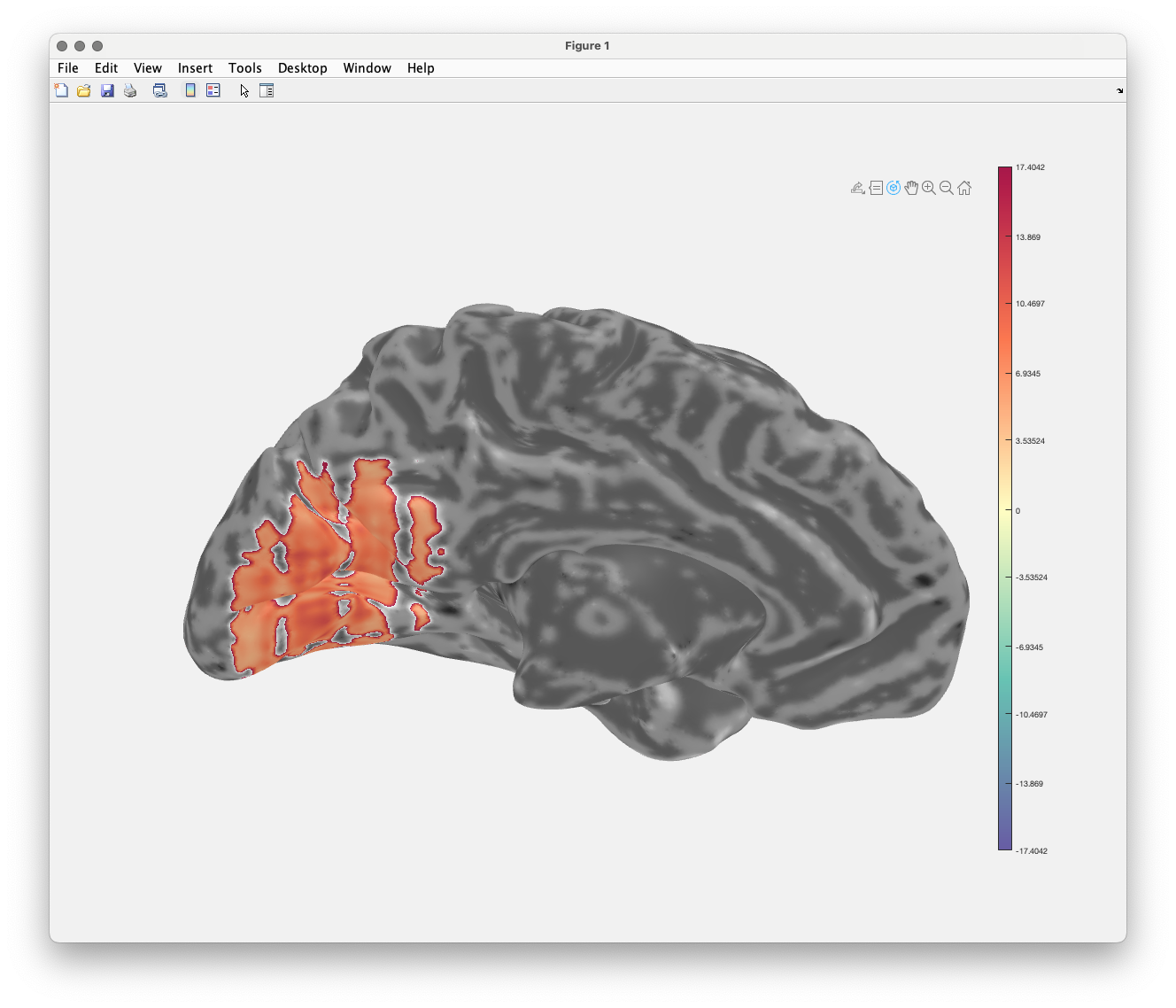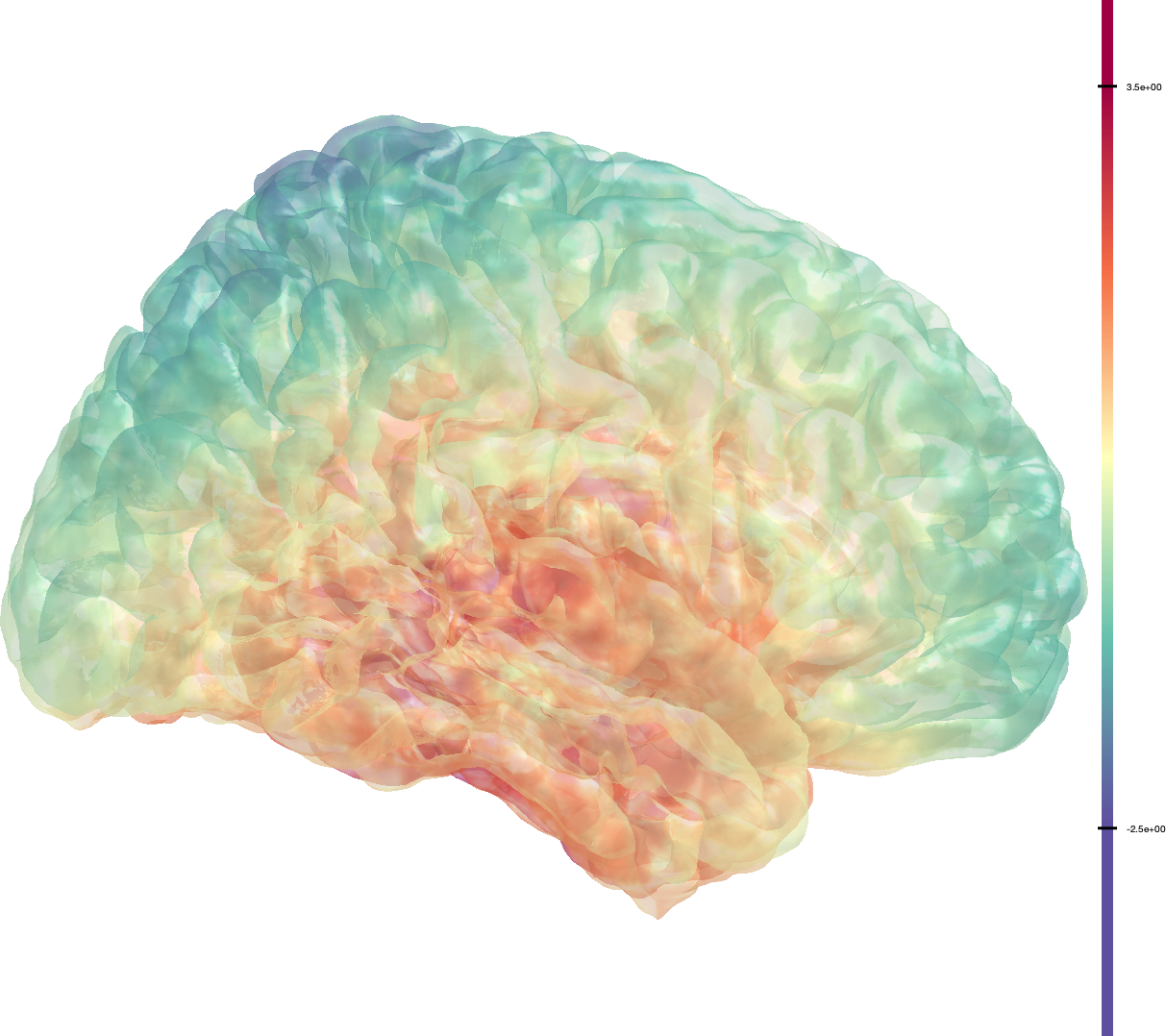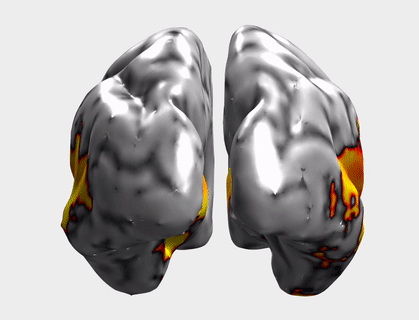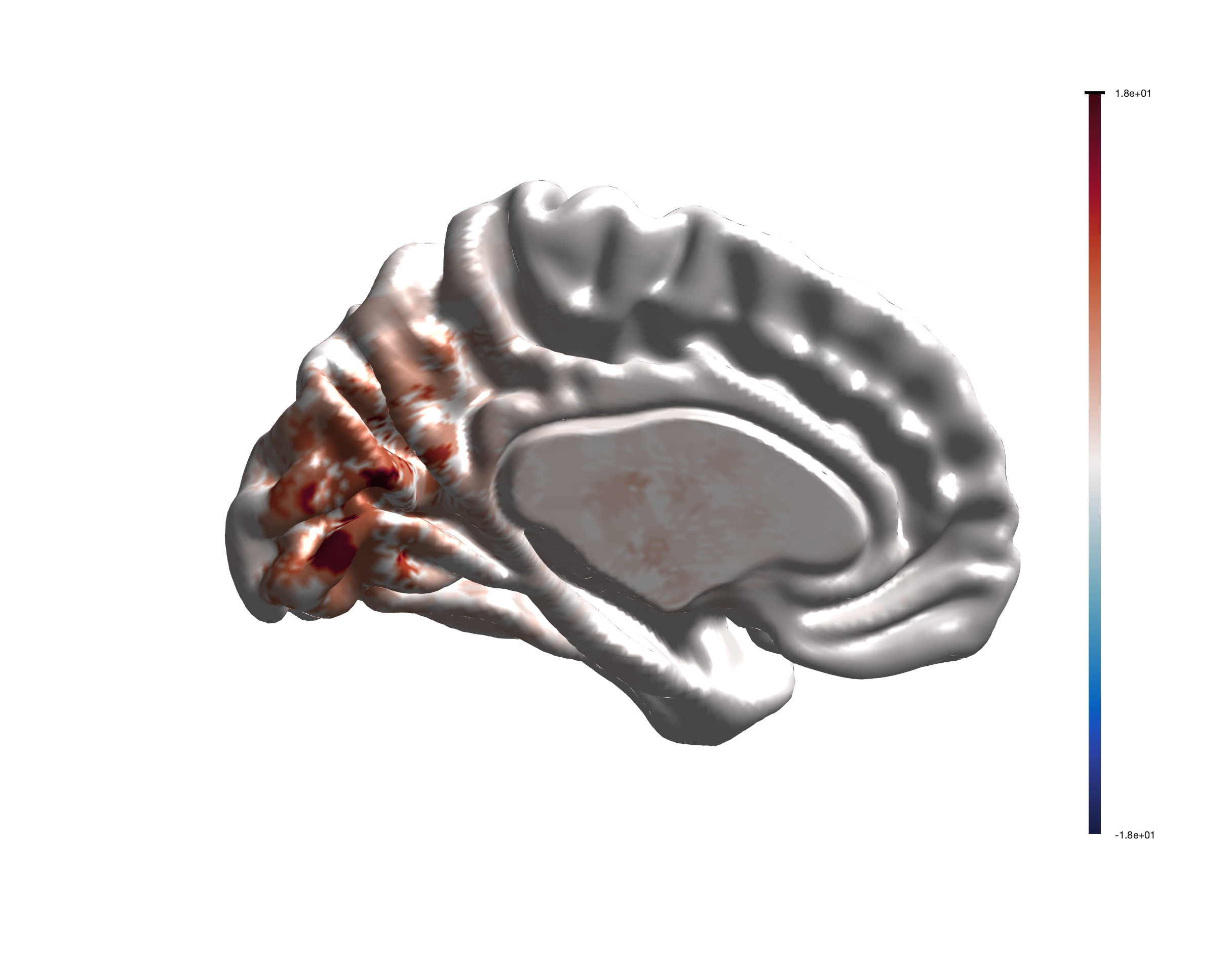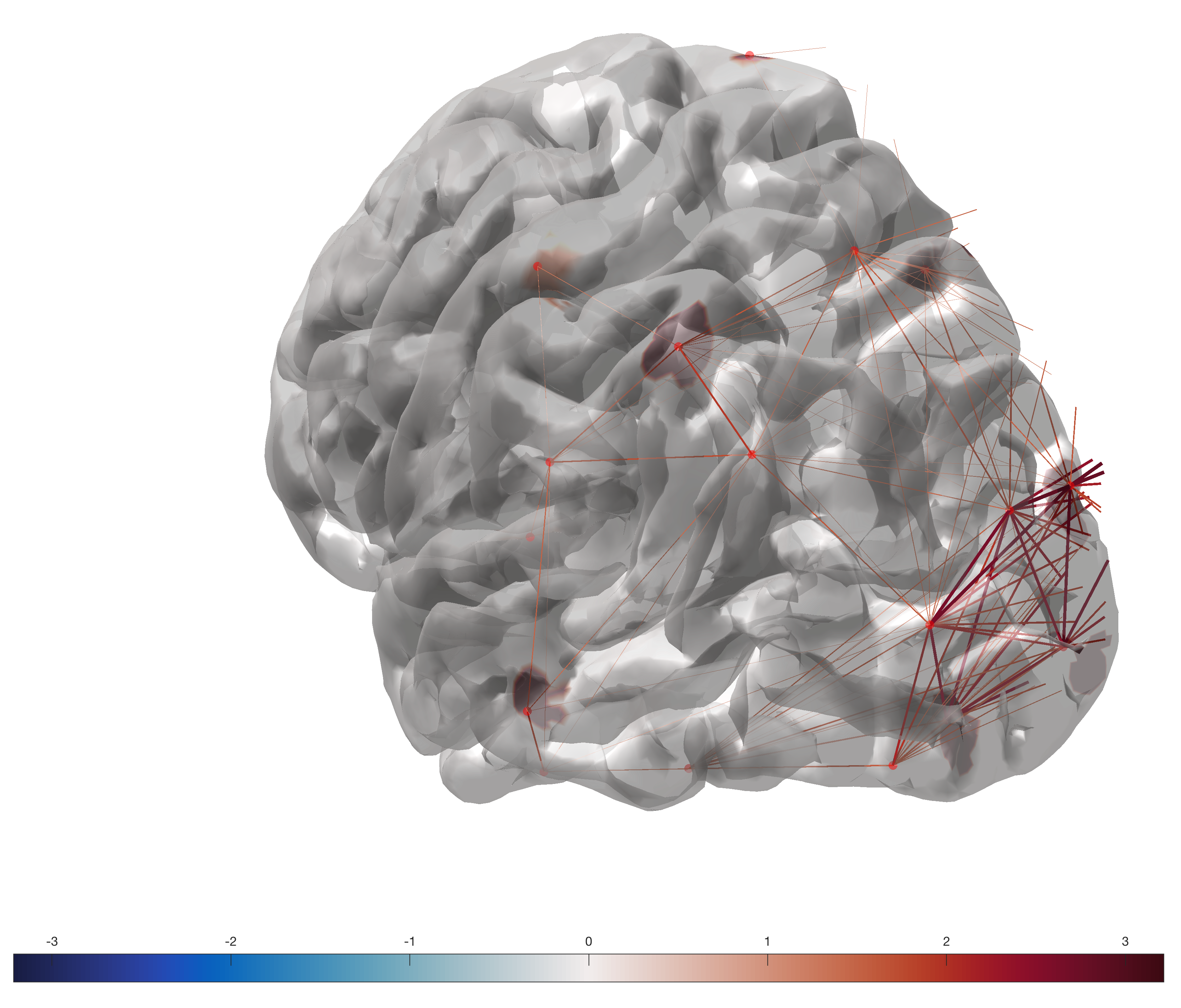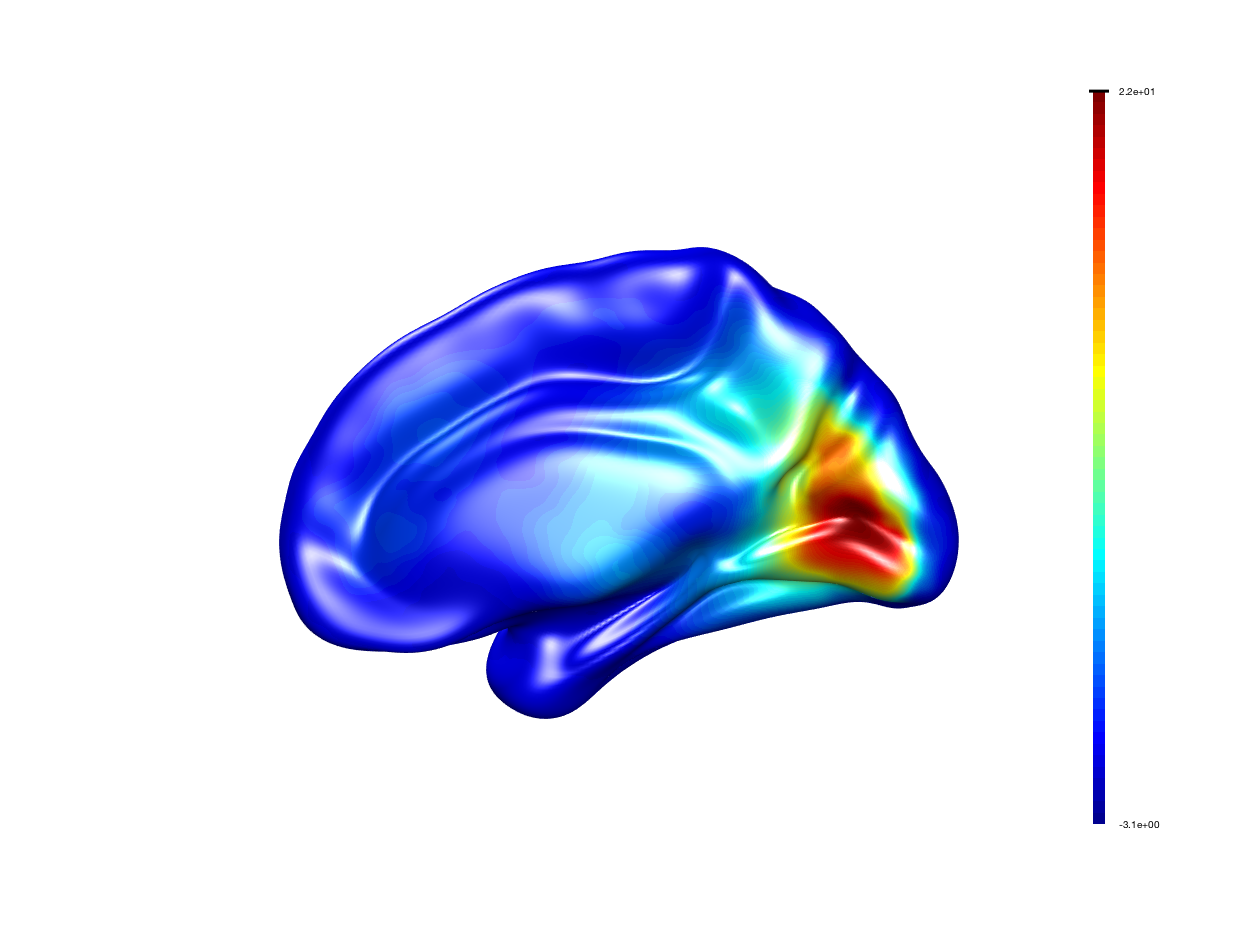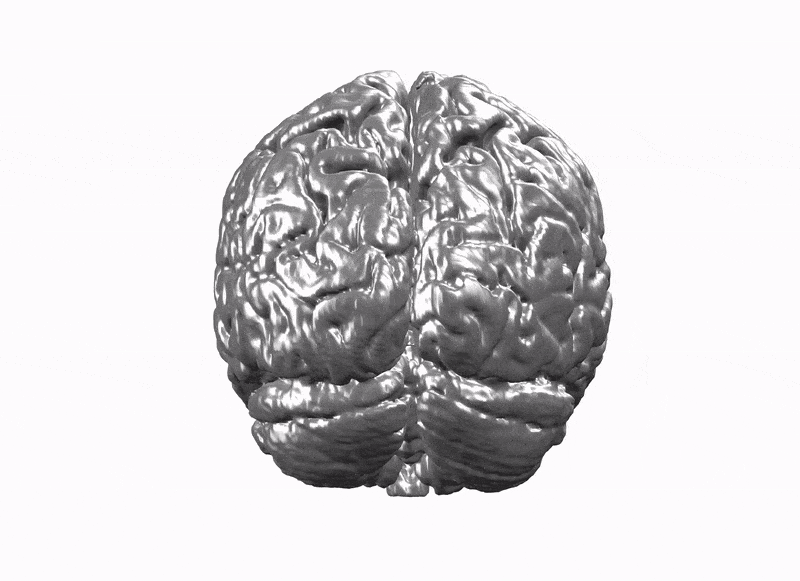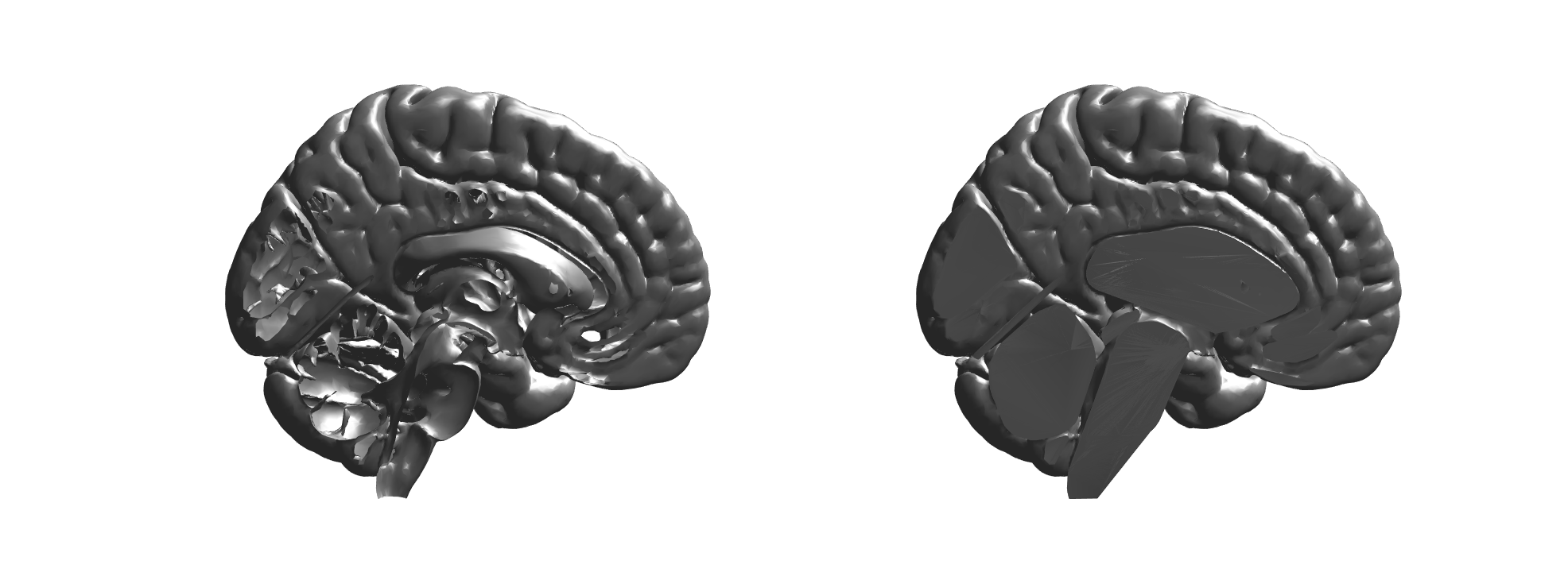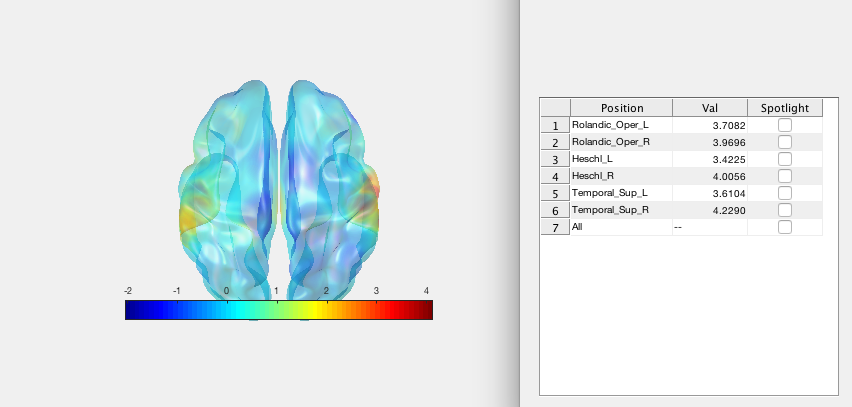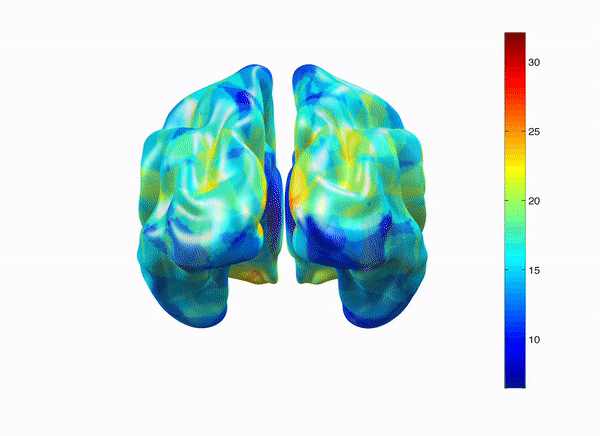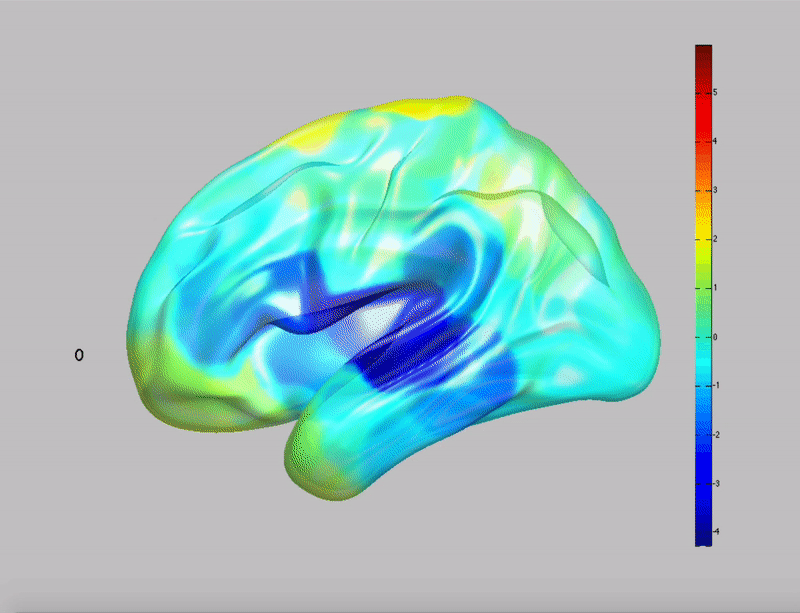A better usage overview and examples can be found here: https://sites.google.com/view/dralexandershaw/code-visualisation/sourcemesh
Some test code to get started:
MyFunctionalNiftiVolume = 'nifti.nii';
afigure;
D = atemplate('mesh','def2','inflate','overlay',{'curvature',MyFunctionalNiftiVolume},'thresh',.4,'open');
Plot MEG/EEG functional overlays, networks (nodes & edges) and more on template brains in matlab.
Provide data along with it's sourcemodel coordinates (from, e.g. fieldtrip), use the default AAL90 vertices or define a sourcemodel based on a nifti volume.
Extract iso surfaces from nifti volumes or project statistical nifti volumes on surfaces.
Plot Gifti surfaces and overlays.
Selection of volume-to-surface projection algorithms including euclidean ICP search & ray casting.
Plot whole brain or left / right hemisphere only.
Read & write .edge and .node files.
Export 3D images in 3D file formats VRML and STL.
Transform data into atlas space (AAL90/78/58) and add labels.
Automatically label peaks in functional overlays and show interactively.
Export stationary (camera rotation) and temporal (function over time) videos.
Perform spatial PCA and find local maxima.
Electrophysiological network alterations in adults with copy number variants associated with high neurodevelopmental risk D Dima et al., 2019. https://www.biorxiv.org/content/10.1101/753145v1.full.pdf
Oscillatory hyperactivity and hyperconnectivity in young APOE-ɛ4 carriers and hypoconnectivity in Alzheimer’s disease L Koelewijn et al., 2019. https://www.ncbi.nlm.nih.gov/pmc/articles/PMC6491037/
Measuring robust functional connectivity from resting-state MEG using amplitude and entropy correlation across frequency-bands and temporal scales Godfrey & Singh 2020. https://www.biorxiv.org/content/10.1101/2020.03.31.017749v1.full
GABA-A receptor mapping in human using non-invasive electrophysiology Shaw et al., 2020. https://www.biorxiv.org/content/10.1101/2020.05.11.087726v2
Energy landscape of resting magnetoencephalography reveals frontoparietal network impairments in epilepsy Dominik Krzemiński et al., Network Neuroscience https://www.mitpressjournals.org/doi/full/10.1162/netn_a_00125
Individual-fMRI-approaches reveal cerebellum and visual communities to be functionally connected in obsessive compulsive disorder Rajan Kashyap et al., 2021. Nature Scientific Reports. https://www.nature.com/articles/s41598-020-80346-6
Energy Landscape: https://github.com/dokato/energy_landscape
DMF Entropy: https://github.com/paulodder/dmf_entropy
Reads: .nii / .nii.gz / .edge / .node / .gii
Writes: .nii / .gii / .node .edge / .stl / .vrml / videos (format dependent on system)
Plotting functional overlays and networks on brain meshes.
Includes some compiled cpp code as (linux) mex for speed up for Mac and Linux. If these cause problems, delete them.
*UPDATE: Can export meshes with overlays and networks as .stl and .wrl objects. See example interactive here: https://sketchfab.com/models/9c34500206f641c5a4445dd9d53b7b3e
Either use the (simple) GUI, preferably, use simple matlab commands.
Takes paired 'Property','Name' values. Examples below. Also see scripts in Examples folder.
% % Plot the default template mesh:
% atemplate()
% % Plot a supplied (gifti) mesh:
% atemplate('mesh',mesh) % where mesh is a struct or gifti object with 'veritces' and 'faces' fields
% % Plot mesh & write out gifti:
% atemplate('mesh',mesh, 'write',name);
% % Plot mesh from nifti volume:
% atemplate('mesh','mymri.nii')
% % Plot 1 hemeisphere (of default mesh 3), with/without hole-filling:
% atemplate('mesh','def3','hemi','l') ; alpha 1;
% atemplate('mesh','def3','hemi','l','fillholes'); alpha 1;
% % When plotting AAL90 data, you don't need to supply source locations.
% % Just provide the ovelray values: L [90x1], and whatever options you need - or use a default mesh.
% atemplate('overlay',L,'method',{'aal_light','spheres'});
% % or:
% atemplate('mesh','def4','overlay',L,'method',{'aal_light','spheres'});
% % Plot template with overlay values L at sourcemodel values sormod, interpolated on surface.
% % Sormod is n-by-3, L is n-by-1.
% atemplate('sourcemodel',sormod,'overlay',L)
% % Plot the supplied gifti mesh with overlay values L at sourcemodel locations
% % sormod interpolated on surface.
% % Sormod is n-by-3, L is n-by-1.
% atemplate('gifti',mesh,'sourcemodel',sormod,'overlay',L)
% % Plot as above but using a ray casting approach
% atemplate('gifti',mesh,'sourcemodel',sormod,'overlay',L,'method','raycast')
% % - Plot as above but write out TWO gifti files:
% % 1. MYGifti.gii is the gifti mesh
% % 2. MYGiftiOverlay.gii is the corresponding overlay data
% atemplate('gifti',mesh,'sourcemodel',sormod,'overlay',L,'write','MYGifti')
% % Plot overlay from nifti volume
% atemplate('overlay','overlay_volume.nii')
% *Note on sourcemodel option: Some fieldtrip sourcemodels have x & y
% swapped (?), undo by doing sm = [sm(:,2),sm(:,1),sm(:,3)];
% % Co-register the surfaces of the nii volumes in mesh and overlay,
% % put in aal90 space and add labels:
% atemplate('mesh',t1.nii,'overlay',functional.nii,'template','aal90','labels')
% % Put overlay in AAL space and use interactive 'peaks' (clickable)
% atemplate('sourcemodel',sormod,'overlay',overlayvector,'template','aal90','peaks')
There are currently three different methods for projecting functional overlay data onto meshes.
-
Ray casting: (default) this method grids the source functional data, computes the mesh face normals at each centroid and performs ray casting from each mesh triangle to determine which functional values appear at which mesh face.
-
Euclidean ICP: calculates the closest mesh points to each source point and performs a linear (weighted) iterpolation of the data onto the mesh surface
-
Trap radius: this method inflates a sphere of radius r around each source point. Any mesh vertices falling inside this sphere are coloured with this functional value.
To select a method:
atemplate('gifti',mesh,'sourcemodel',sormod,'overlay',L,'method','raycast')
atemplate('gifti',mesh,'sourcemodel',sormod,'overlay',L,'method','euclidean')
atemplate('gifti',mesh,'sourcemodel',sormod,'overlay',L,'method','spheres')
% For AAL90 overlay data, use an additional method flag, as:
atemplate('gifti',mesh,'sourcemodel',sormod,'overlay',L,'method',{'aal_light','spheres'})
% This flag invokes a fixed mapping from AAL centroids into a parcellated volume. The second method (spheres in this example) is then used to detmine which values from this new volume appear at which faces of the mesh.
% % Plot a video overlay and write it out:
% atemplate('gifti',g,'sourcemodel',sormod,'video',m,'name',times);
%
% % Where:
% - g = the gifti surface to plot
% - sormod = sourcemodel vertices
% - m = overlay values [vertices * ntimes]
% - name = video savename
% - times = vector of titles (time values?)
% % Plot template mesh with 90x90 AAL network, A:
% atemplate('network',A);
% % Plot network A at sourcemodel locations in 'sormod'.
% % Sormod is n-by-3, network is n-by-n.
% atemplate('sourcemodel',sormod,'network',A);
% % As above but writes out .node and .edge files for the network, and the gifti mesh file.
% atemplate('sourcemodel',sormod,'network',A,'write','savename');
% % Plot network defined by .edge and .node files:
% atemplate('network','edgefile.edge');
% % Put overlay into atlas space: [choose aal90, aal78 or aal58]
% atemplate('sourcemodel',sormod,'overlay',o,'template','aal58')
% % Put network into atlas space:
% atemplate('sourcemodel',sormod,'network',N,'template','aal78')
% % Put video into atlas space:
% atemplate('sourcemodel',sormod,'video',m,'name',times,'template','aal78')
% % Export 3D images (overlays, meshes, networks) as VRML & .stl:
% atemplate( ... ,'writestl','filename.stl');
% atemplate( ... ,'writevrml','filename.wrl');
% % Plot default AAL90 node labels on default mesh:
% atemplate('labels');
% % Plot specified labels at centre of roi's specified by all_roi_tissueindex:
% atemplate('labels', all_roi_tissueindex, labels);
%
% % Where:
% % all_roi_tissue = a 1-by-num-vertices vector containing indices of the
% roi this vertex belongs to
% % 'labels' = the labels for each roi.
% % The text labels are added at the centre of the ROI.
Labels notes:
- If plotting a network, only edge-connected nodes are labelled.
- If plotting a set of nodes (below), only those are labelled.
- Otherwise, all ROIs/node labels are added!
% % Plot dots at node==1, i.e. N=[90,1]:
% atemplate('nodes', N);
Any combination of the inputs should be possible. See scripts in 'Examples' folder for more help.
% load New_AALROI_6mm.mat % load ft source model, labels and roi_inds
% net = randi([0 1],5061,5061); % generate a network for this sourmod
% pos = template_sourcemodel.pos; % get sourcemodel vertices
% labs = AAL_Labels; % roi labels
% rois = all_roi_tissueindex; % roi vertex indices
% atemplate('sourcemodel',pos,'network',net,'labels',rois,labs);
% atemplate('mesh',t1.nii,'network','test_sourcemod.edge','template','aal58')
See also: slice3() slice2()
addpath to wherever the toolbox is:
addpath(genpath('~/Downloads/MeshAAL-master'));
Dependencies: fieldtrip & spm
